PCIe X16 vs X8 vs X4 when using GPU for Deep Learning
Goal
The goal of this experiment is to find if using X4 PCIe has an impact in performance when using the GPUs for Deep Learning.
I’m currently designing my new PC and I need that information to choose the motherboard. I have found a comparison for X16 vs X8 but I have been unable to find information for X4.
I will also be testing if having a greater distance between gpus leads to better performance due to better cooling.
Setup
| hardware | model |
|---|---|
| motherboard | Z170A SLI PLUS |
| gpus | 2x 1080 |
| cpu | Intel Core i7-6700K 4.0 Ghz 4core |
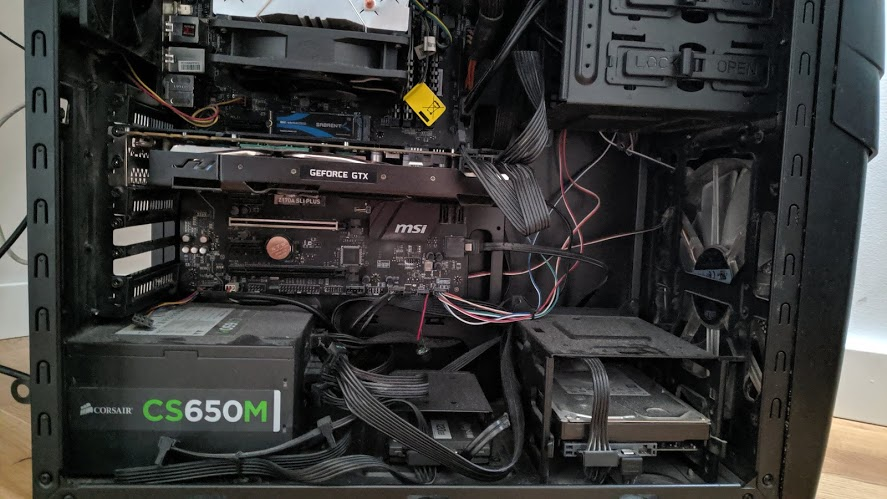
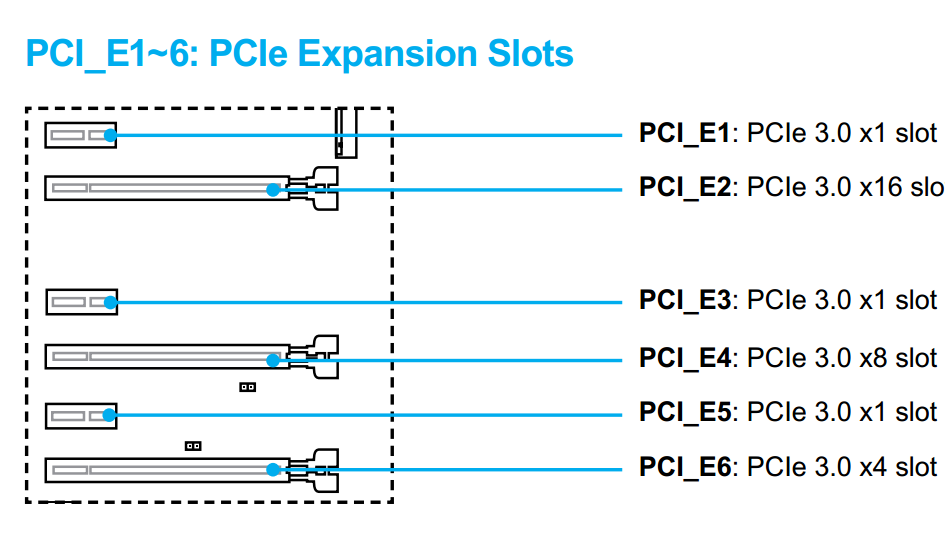
Experiments to run:
- Single GPU on all the PCIe ports
- Two gpus in all the possible combinations.
- Independent trainings
- Training with the two gpus
Compare training speed and temperature of the gpus.
Results
Single GPU
On this experiments I simply moved the GPU over all PCIe slots and performed the same training. Placing the GPU on PCIe6 was difficult because there are some connections of the motherboard below that slot and I had to remove them all. I had to use an screwboard after removing the connections.
Those wires at the bottom of the motherboard had to be removed to be able to plug the GPU to PCIe6.


| PCIe | epoch time (s) | slowdown |
|---|---|---|
| X16 | 30.92 | 0 |
| X8 | 31.61 | 2.1% |
| X4 | 32.51 (32.93) | 4.9% (6.1%) |
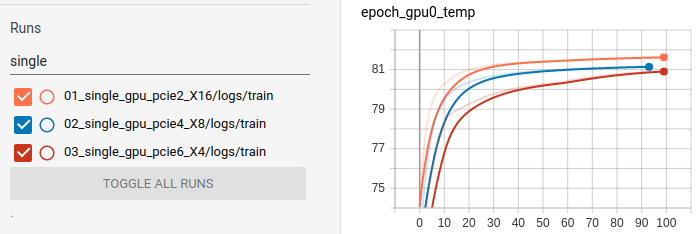
Double GPU
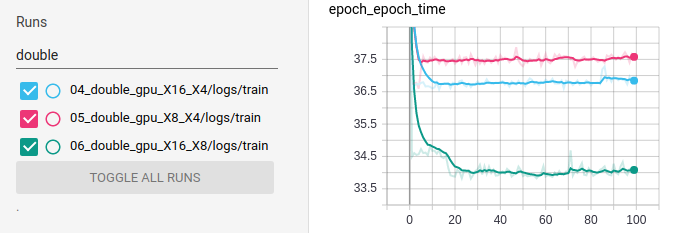
| PCIe | epoch time (s) | slowdown |
|---|---|---|
| X16 X4 | 36.81 | 7.7% |
| X8 X4 | 37.46 | 9.2% |
| X16 X8 | 33.98 | 0 |
There is a clear slowdown when not using the X16 slot for double GPU training. On the training X8-X4 the gpus were closer than any on the other trainings and thus the temperature was higher. So part of the slowdown of that experiment could be caused by hotter GPU.
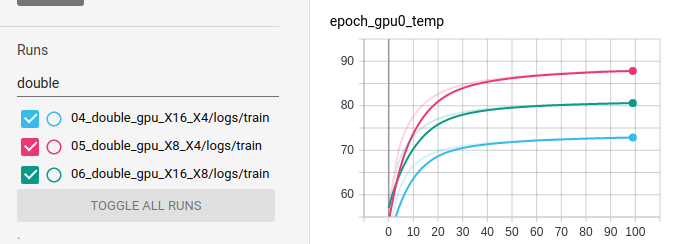
Relation between GPU temperature and frequency
On some of the trainings I have logged the GPU frequency and temperature using nvidia-smi. I want
to see how the frequency is decreased when reaching high temperatures. This information could be helpful
to decide if liquid cooling is worth it.
On this training the gpus were very close and temperatures raised to 90ºC.
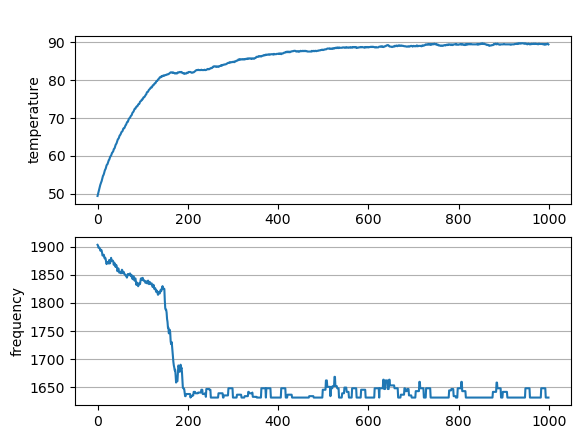
This training was colder.

This also was colder.
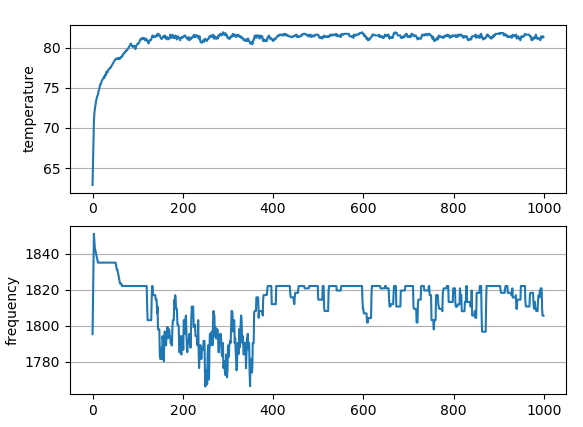
It seems that only when the temperature is bigger than 80ºC that the effect on frequency is big. If the temperature is around 80ºC then the frequency will only drop from 1850 to 1820 which is a slowdown of just ~1.5%. However in the training that the temperature raised to near 90ºC the frequency was decreased to 1650 MHz, which is a slowdown of 13%.
When using liquid cooling I have seen that temperatures could be kept between 50 and 60ºC. Considering that temperatures around 80ºC are fine I don’t think liquid cooling should be recomended.
Bonus: Training with an external fan
Just for fun I have trained with a single gpu on X16 with the case open and a big external fan.
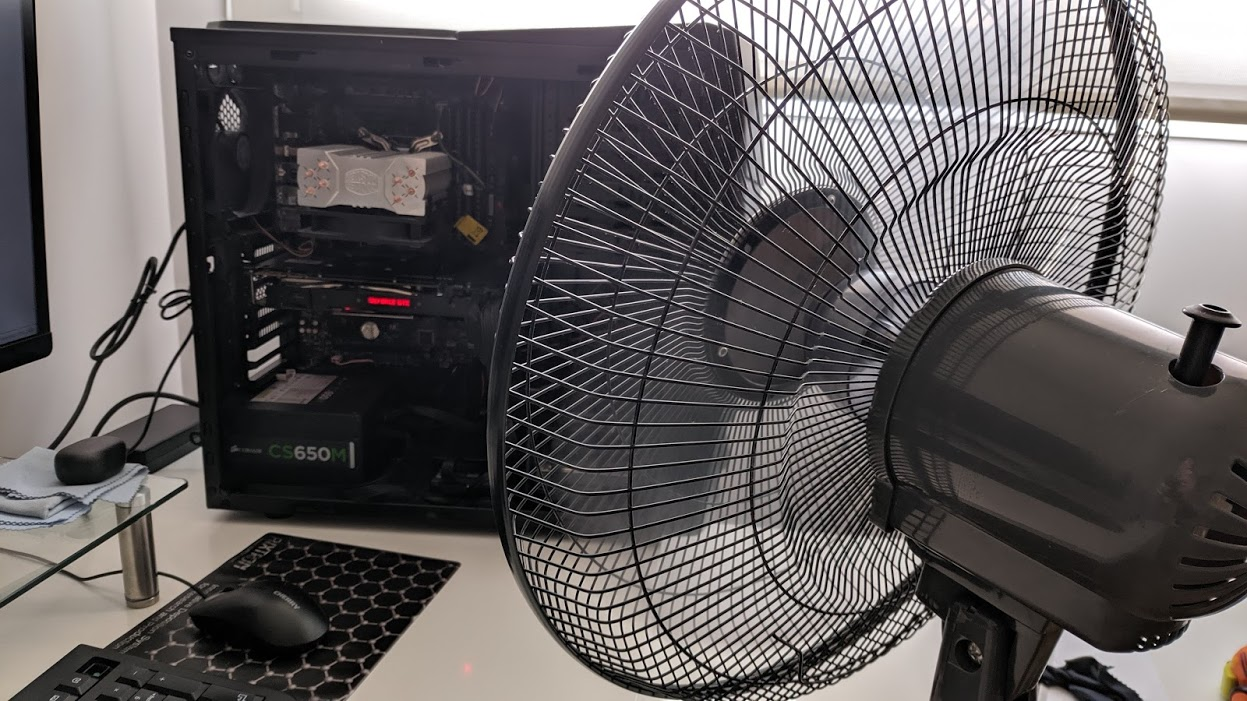
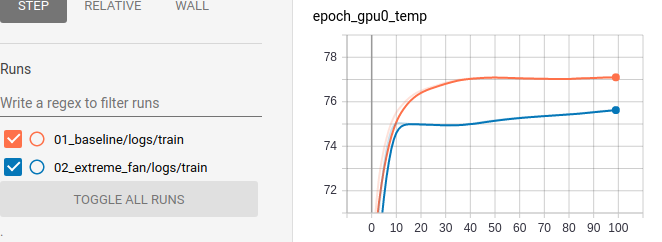
The temperature when using the external fan was around 1.5ºC lower, so this implies that current case has good enough airflow.

The epoch time was slightly better, around 0.6% faster (0.2 seconds).
Summary
A slowdown has been observed both when using single gpu training and dual gpu training. Thus it is not recommended to use X8 and X4 PCIe slots for a GPU for deep learning.